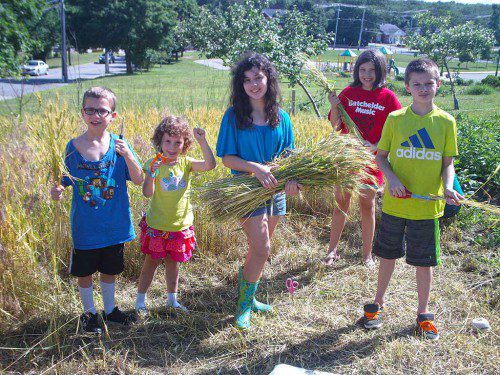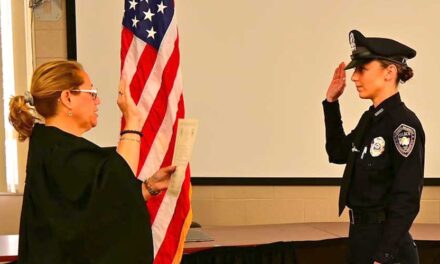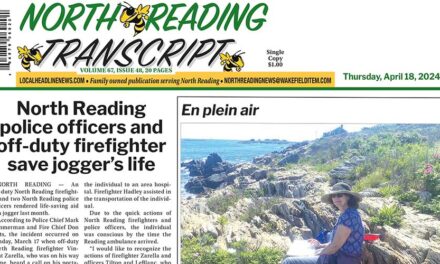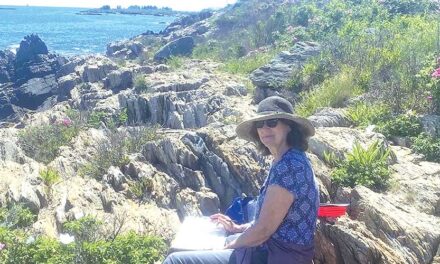Published in the July 6, 2017 edition

Calvin Fisher, Eva Fisher, Lucy Fisher, Ainsley Rymill, and Nolan Baker pause during the recent wheat harvest at the Batchelder School. Lucy displays one of 16 sheaves of winter wheat that they harvested, using kitchen scissors. (Courtesy Photo)
NORTH READING – Just after school vacation began, five Batchelder School students joined their parents to “bring in the sheaves” of winter wheat that grew beside the school. Planted last September by the Batch’s third graders, as part of the “Field to Plate” program, the wheat had reached maturity and had to be harvested before the wheat heads dried, and the birds discovered it.
Last year the birds got to the grain in the 600 square foot field before the student harvesters got there. What was left to harvest last year was standing straw, barren of any wheat seeds.
Even though the planned harvest date had been rained out, a handful of students came by school the next day and offered to help harvest the wheat crop. Using kitchen shears, each harvester cut a handful of wheat stalks at a time, just above the ground. Once the small handfuls had grown into piles about eight inches in diameter, they were tied up with string in sheaves. A total of sixteen sheaves were made during the two-hour harvest.
The students’ harvest will be dried inside a carriage house, but for fun the students tried to construct a stook, which is a teepee-like arrangement of a dozen sheaves with a few sheaves across the top as a roof. Stooks were made in the field when farmers had acres of wheat to dry and no harvesting machinery and no barn large enough. Our stook collapsed.
Next October the sheaves will be brought back to school, and third graders will have to figure out how to thresh (remove the seeds from the stalks), winnow (separate the seeds from the chaff), and mill the seeds into flour. A few days before Thanksgiving, they will make small loaves of bread, using yeast and their home-grown, whole wheat flour.
In addition to wheat, Batch third graders grow “the three sisters” (corn, beans and squash) in mounds, just as the Wampanoag and Plimoth settlers did. They also grow potatoes and apples, all of which are used to illustrate and illuminate the required curriculum in social studies, science, math, and problem solving.




